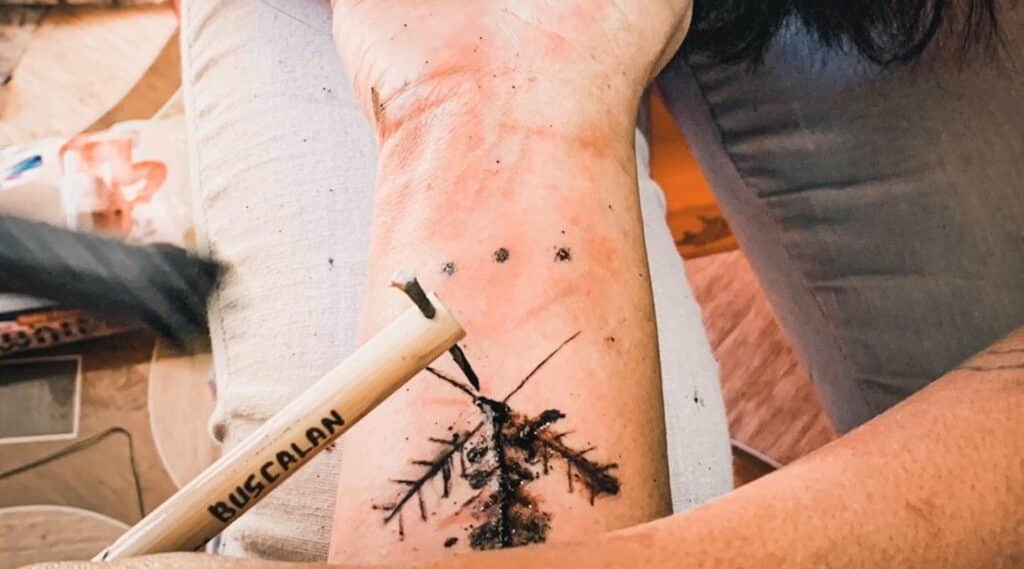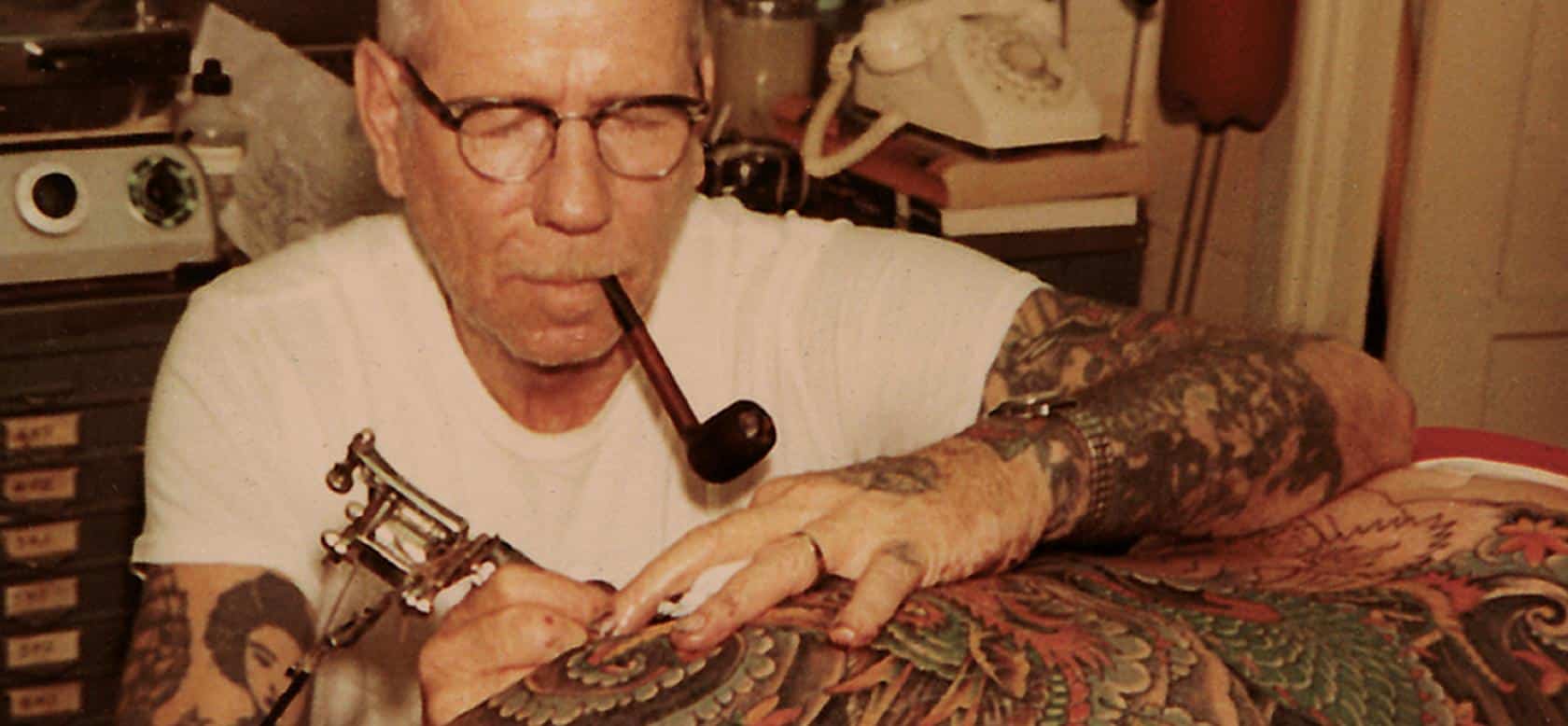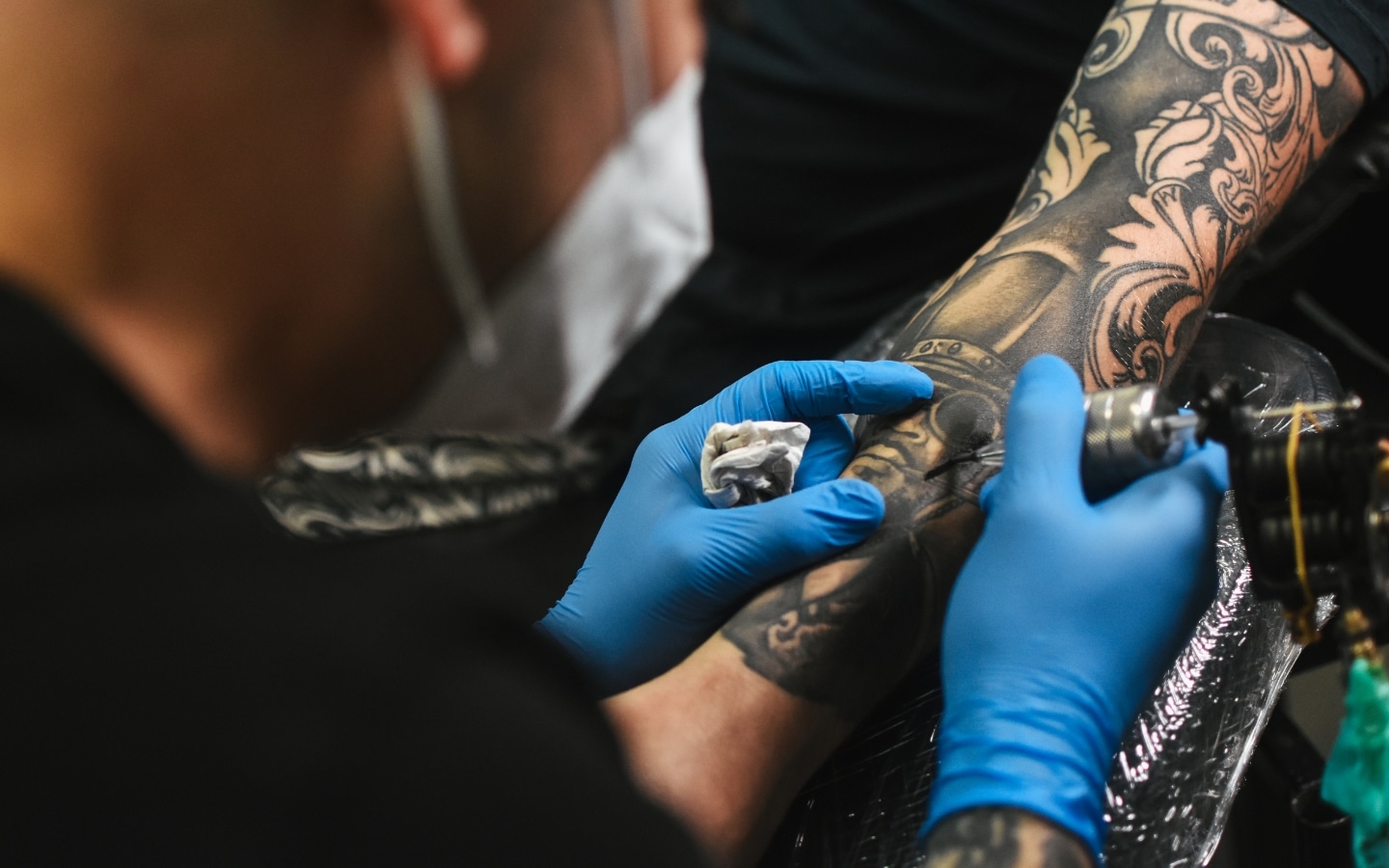Featured image credit: awanderfulsole.com
If you are thinking about getting into the world of tattoo artistry, then it’s important to know the history of the trade.
Tattoos date back thousands of years, and the art form has evolved numerous times throughout the centuries.
So, let's take a trip through time and explore the early tattooing methods of the world.
Origin Of Tattoos
Ötzi Tattoo
Tattooing has existed on planet Earth for millennia.
While we can never know when or why tattooing started, we can speculate that it may have started for a number of reasons, such as identifiers for tribespeople, spiritual protection, branding for criminals, acupuncture, or rights of passage that proved someone's worth.
The earliest known evidence we have of tattoos comes from a European mummy found in the Alps on the border between Austria and Italy.
This mummy that just so happened to be found by two German tourists (who themselves thought was a recently diseased mountaineer) was a 5000-year-old Chalcolithic (Copper Age) European.
The mummy would go on to be named Ötzi after the Ötztal Alps, where his remains were discovered.
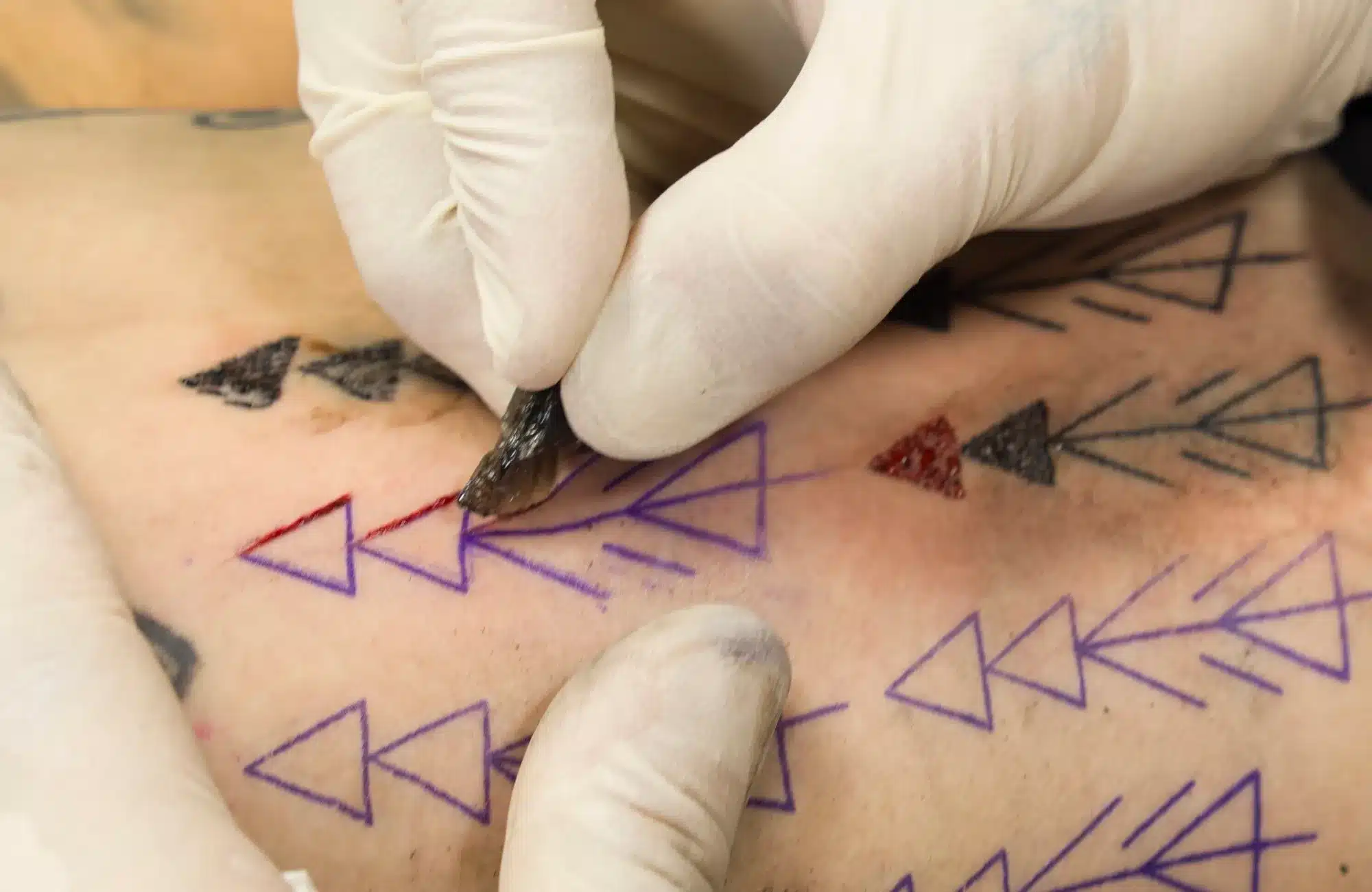
Photo credit: IFLScience
Due to having an arrowhead lodged into his shoulder and many other wounds, it is believed Ötzi was a victim of murder for reasons that can only be speculated upon.
Beyond the wounds, Ötzi’s body was covered in tattoos. 61 tattoos in total have been found on Ötzi’s body.
Initially, these weren't identified as tattoos due to the condition of his skin, but after further examination with various imaging techniques, including ultraviolet light, revealed that these marks were indeed intentional tattoos.
Ötzi’s tattoos are up to speculation, but they are believed to have been used for various reasons, such as therapeutic purposes, as many were located on or near traditional acupuncture points, possibly acting as an early form of medicinal treatment to alleviate joint pain and strain.
Other reasons for Ötzi’s tattoos could have been for ritualistic purposes, or his status, role, or identity within his group, and beyond pain relief, may have been believed to have healing abilities to recover his aging and wilting body.
Small incisions were made into Ötzi’s skin. These were likely done with a sharp tool, possibly made from flint or bone, which was common in Neolithic tools.
Amunet
Many mummies dating back to around 2000 BC have been discovered with tattoos depicted on their bodies, with the most famous being Amunet, a priestess of the goddess Hathor at Thebes.
Amunet was discovered in the late 19th century by archaeologists in Deir el-Bahari, which is a complex of mortuary temples and tombs.
Amunet was given her name by the archeologists who discovered her with her name being ancient Egyptian for “The Hidden One.”
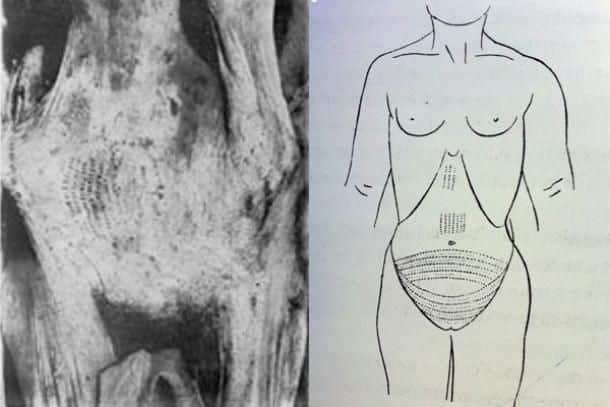
Photo credit: kolb2016.wordpress.com
The name was probably chosen due to her association with religious practices and her role at the temple of Hathor in Thebes.
Amunet’s body was discovered to contain many tattoos composed of several lines and dots grouped in abstract geometric patterns.
Her tattoos were located on her lower abdomen, legs, and arms, and the designs were applied using a technique involving a needle and ink similar to modern tattooing methods.
Amunet’s tattoos were likely made using a technique that involved puncturing the skin with a sharp object, possibly a needle made of bone or metal, and then inserting soot or other pigments to leave a permanent mark.
Polynesian And Pacific Island Tattoos
Pacific Island countries such as Samoa, Tahiti, New Zealand, and Hawaii have a long history of ancient tattooing methods.
These tribal tattoos were used as rites of passage, marking important life stages.
The traditional method of Pacific Island tattoos involves tools made from natural materials such as bone, tusk, or shell, which are used to carve or puncture the skin.
A comb-like instrument called a 'uhi' is used in many Polynesian tattoo practices.
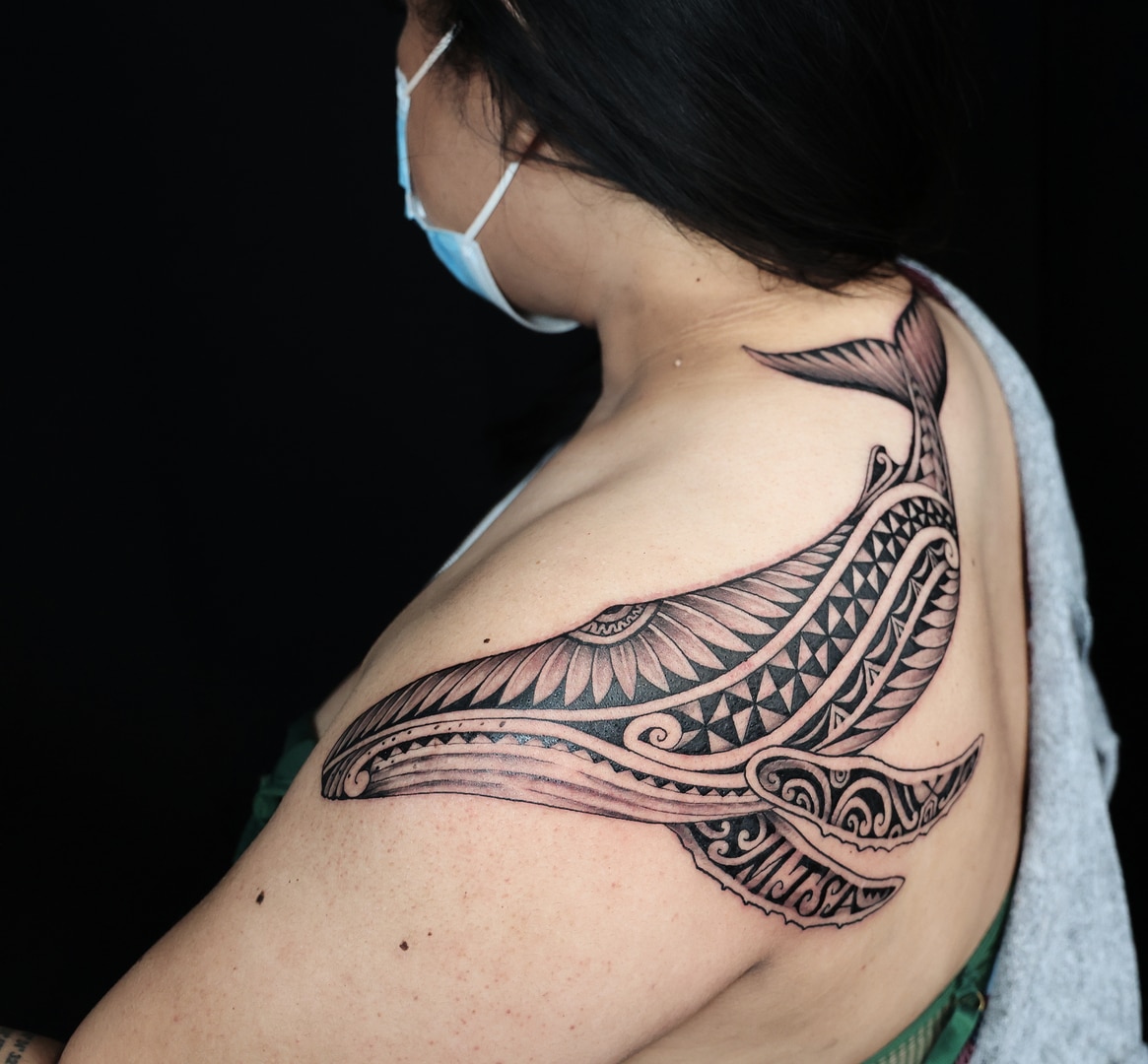
Photo credit: islandtat.com
The Pigments used for these tattoos were usually derived from natural sources, such as soot or ink made from candlenuts, which provided the black color traditional to many Polynesian tattoos.
The traditional method of Polynesian tattooing was painstaking and involved tapping the ink-laden tool into the skin.
This process can be quite painful and is prolonged over several sessions, depending on the size and complexity of the tattoo.
Tattoos Reintroduction Into Europe
While tattoos existed in Europe centuries before early European voyages, their use dwindled across Europe thanks to the rise of Christianity.
Christians viewed body modifications of any kind unfavorably, which led to a stigmatization of the practice, as it was most likely seen as a pagan ritual that was incompatible with Christian values and teachings.
Captain James Cook was a British explorer, navigator, and cartographer who traveled across the Pacific Ocean, achieving the first recorded European contact with the eastern coastline of Australia and the Hawaiian Islands and the first recorded circumnavigation of New Zealand.
Here Captain Cook and his crew encountered indigenous peoples with intricate tattoos.
These encounters were documented in the journals and logs kept by Cook and his crew, with the word "tattoo" itself originating from the Tahitian word "tatau," which was first recorded in Cook’s journals.
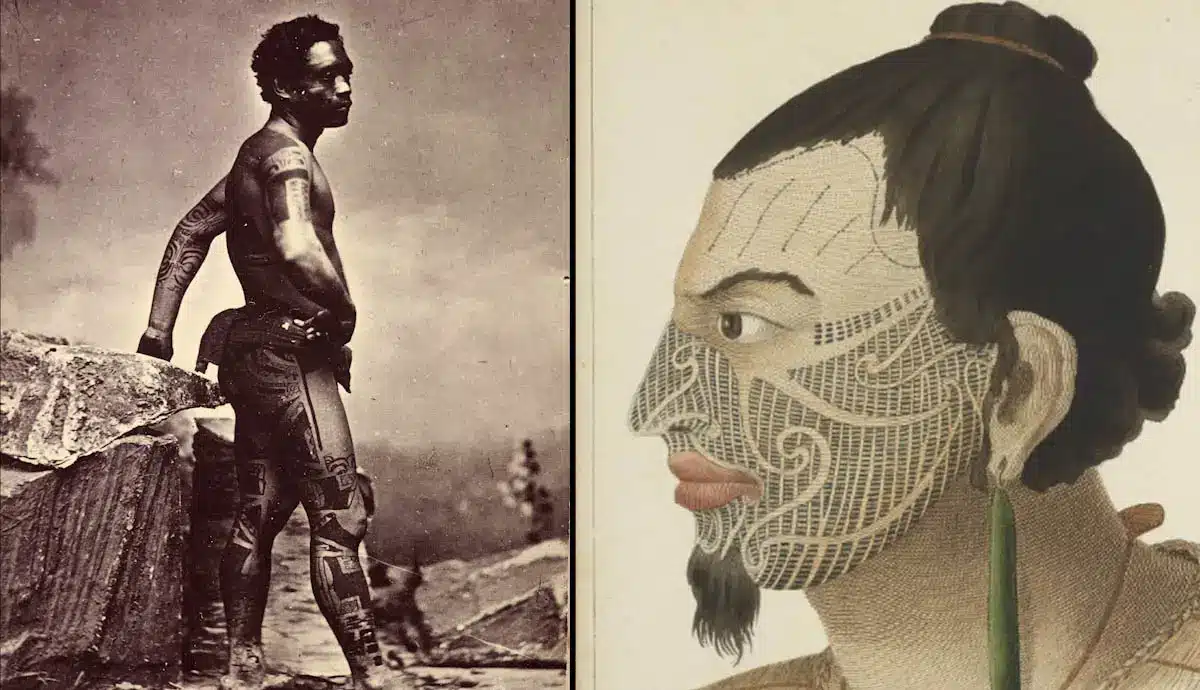
Photo credit: thecollector.com
Sailors on these journeys chose to get tattoos as souvenirs to mark their journeys and experiences.
These tattoos served as symbols of their travels and adventures and sometimes as talismans for good luck and protection at sea.
Once these sailors returned home, they not only brought goods and stories but also their tattoos. Ports, where these sailors disembarked, became hubs for early tattoo artists, who often were self-taught or trained under non-European tattooists who traveled with them.
Some of the first European tattoo artists were those who had learned their craft during their travels or from visiting tattoo artists from the Pacific islands.
Figures such as Sutherland Macdonald and George Burchett became renowned for their tattooing.
Macdonald is often cited as one of the first professional tattoo artists in the UK, having started his trade in the late 19th century, while Burchett enhanced the art with innovations and gained fame as the "King of Tattooists."
Technological and Artistic Advancements in the 19th Century
Samuel O’Reilly
In 1891 an American inventor and tattoo artist named Samuel O’Reilly got his patent for the first electric tattoo machine.
This device was an invention based on Thomas Edison’s electric pen that was modified to drive a needle up and down, thereby automating the process of inserting ink into the skin.
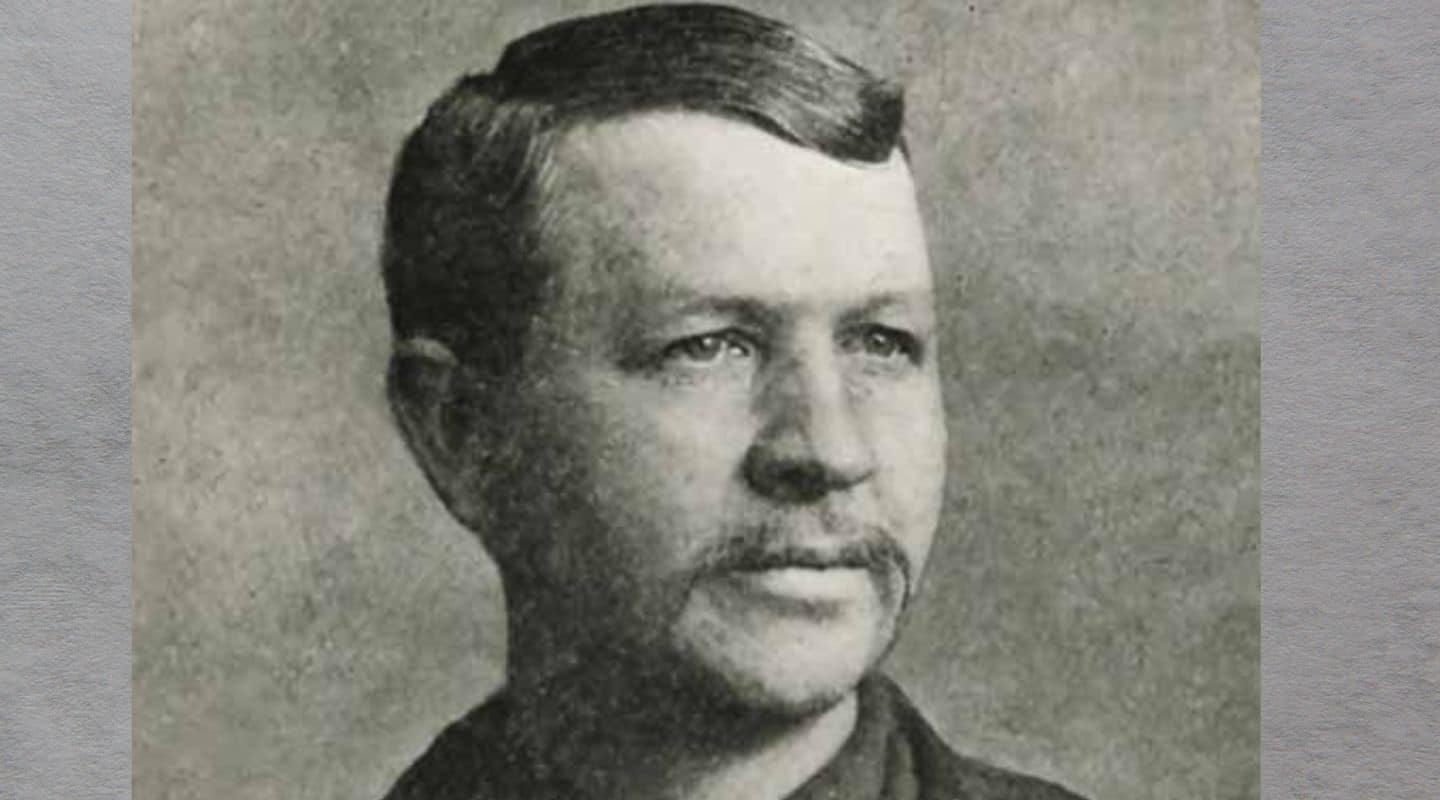
O'Reilly’s invention greatly impacted the tattooing industry by increasing the speed and efficiency of tattooing.
This allowed artists to create more intricate and detailed designs than were previously possible with manual methods.
Sailor Jerry Collins
Norman Keith Collins, better known as Sailor Jerry, etched his name in tattooing folklore by popularizing and elevating the tattoo art form in the United States.
After enlisting in the United States Navy, Sailor Jerry was exposed to Southeast Asian culture and art, which greatly influenced his tattooing style, which went on to become a tattooing niche known as the Traditional Tattoo This iconic American style featured crisp, clean lines and vivid colors.
His designs often included patriotic themes, nautical symbols like ships and anchors, eagles, and other motifs drawn from American and military iconography, but he also incorporated elements from Asian art into his work, with his dragons, snakes, and other Oriental motifs becoming highly sought after.
Sailor Jerry would also go on to help advance the tattooing world by creating pigments that were safer and more vibrant and also helped to improve tattoo machines and needle configurations.
Evolution Of Tattooing Beyond Samuel O’Reilly And Sailor Jerry
Since Samuel O’Reilly and Sailor Jerry, the tattooing world has undergone an enormous shift.
Technological and pigmentation advancements have made incredible strides, such as modern tattoo machines becoming more precise and easier to control, allowing for more detailed and intricate designs, and the range and quality of tattoo inks available increasing, including the development of vibrant colors and better black inks.
Artistic diversification has led to countless new styles emerging. Styles such as watercolor, photorealism, geometric, and neo-traditional, among others have sprung onto the scene diversifying and pushing the boundaries of what is possible within the tattooing art form.
Cultural shifts and global influences have exploded the tattooing art form shedding the stigmatization, with them now being considered a mainstream form of personal and artistic expression with the globalization of tattoo culture leading to a cross-pollination of styles and techniques, blending traditional practices with modern influences
The growth of tattooing has seen a desire for educational development and prompted a push for professionalization.
This includes better educational resources for artists, standardized health and safety regulations, and more structured apprenticeship programs.
These developments have helped to ensure that tattooing has become safer and of a high standard of quality.
Social media's impact has transformed how tattoo artists learn, share, and promote their work.
Platforms like Instagram have allowed artists to reach a global audience, while digital tools for design and planning have streamlined the creative process.
Conclusion
Tattooing has gone on an incredible journey from its ancient primitive practices to modern technological artistry.
From Ötzi's therapeutic markings to Sailor Jerry's iconic designs, each evolution broadens the art form and deepens our understanding of tattooing as a versatile tool for personal and cultural expression.
As tattooing evolves, it remains a compelling testament to human creativity and our desire to express identity through art.
If you’re looking for more information on the world of tattooing, you can find out everything you need to know about why tattoos fade, the best tattoo removal methods, or you can learn about the risks of tattooing.
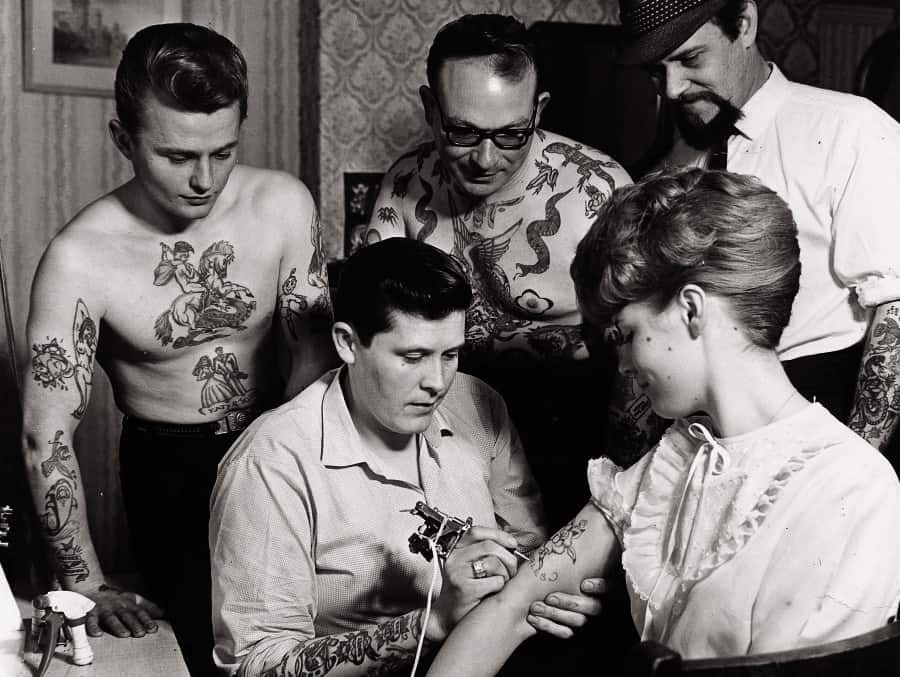
Source: cloakanddaggerlondon.co.uk
- Kristen Bell Tattoos - July 15, 2024
- Risks of Tattooing - July 3, 2024
- Early Tattooing Methods - June 22, 2024

